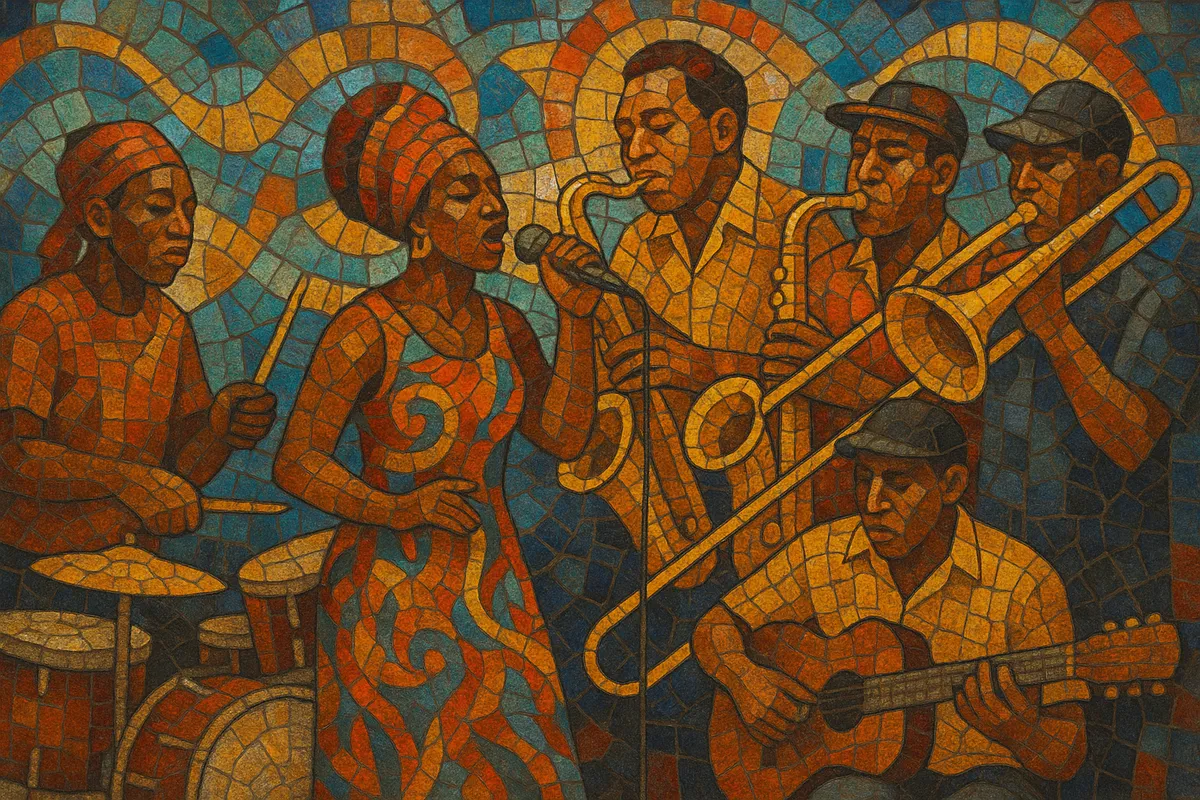Kaseko is a vibrant, horn‑driven dance music from Suriname that blends Afro‑Surinamese rhythms with Caribbean and American influences. It is typically performed by a compact marching‑band‑like ensemble with trap set or marching drums, hand percussion, electric bass, guitar or keyboards, and a bright brass/saxophone section.
Vocals are often in Sranan Tongo (and sometimes Dutch), using lively call‑and‑response refrains and catchy, street‑party hooks. Rhythms lock into propulsive, syncopated grooves that invite communal dancing, while the horns deliver punchy riffs, breaks, and counter‑melodies reminiscent of jazz and calypso bands.
Kaseko’s name is commonly linked to the French “casser” (to break), reflecting the music’s quickstep pace and sharply accented “breaks.” It evolved out of Afro‑Surinamese festive traditions and urban brass band culture, becoming a cornerstone of Surinamese identity at parades, club stages, and diaspora celebrations in the Netherlands.
Kaseko emerged in Paramaribo’s urban milieu in the 1930s, growing from Afro‑Surinamese festive music and dance traditions that were already central to social life. Street parades and community events featured military/brass ensembles, whose instrumentation and performance style shaped the sound. At the same time, records and radio brought calypso, jazz, and other Caribbean and American musics to Suriname, further coloring local practice.
Post‑war decades solidified kaseko’s identity: tight drum grooves, hand percussion, call‑and‑response vocals, and a strong horn section. Bands professionalized and began recording, playing dancehalls and public festivities. The style’s celebratory character made it a soundtrack for national holidays and city life.
Large Surinamese communities in the Netherlands helped propel kaseko beyond Suriname. Bands based in Amsterdam and other Dutch cities fused kaseko with pop, rock, and jazz, releasing records and touring Europe. This era broadened the music’s audience and expanded its toolkit (electric instruments, studio production, and pop song formats) without losing its dance‑first core.
Kaseko remains central to Surinamese cultural identity, thriving at festivals, weddings, and national celebrations. Modern groups incorporate updated production, keyboards, and global pop references while retaining the emblematic horn riffs, polyrhythms, and call‑and‑response vocals. In the diaspora, kaseko frequently coexists alongside calypso, soca, and pop on mixed bills and playlists.


